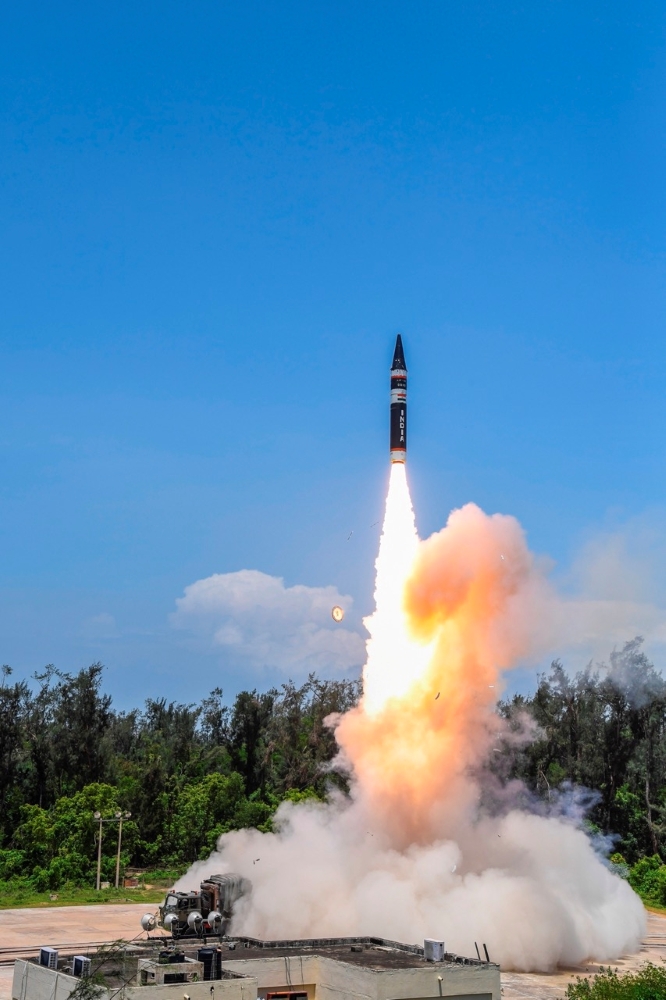
India’s recent test-fire of an AGNI V Intermediate Range Ballistic Missile (IRBM) appears to be a signalling move towards Pakistan, with New Delhi earlier having undertaken test launches this July of the PRITHVI II and AGNI I ballistic missiles, which it terms as ‘nuclear capable’. Tensions between both nuclear-armed nations remains high, following combat actions between both sides from May 7-10.
An Indian Ministry of Defence spokesperson said the recent AGNI V launch validated all operational and technical parameters and was carried out under the aegis of India’s Strategic Forces Command. India’s stated policy is to have ‘credible minimum deterrence’ that underpins its commitment to ‘No First Use’ of nuclear weapons.
The AGNI V is capable of striking targets at ranges up to 5,000 km with very high degree of accuracy and uses a three-stage solid fuelled engine. The AGNI V is considered as the pinnacle of Indian missile development. There are five variants (AGNI I-V) in operational service.
In March last year, the Indian Defence Research and Development Organisation (DRDO) had announced the first successful flight test under ‘Mission Divyastra’ of an AGNI V IRBM with Multiple Independently Targetable Re-Entry Vehicle (MIRV) technology.
The AGNI I can carry a payload of 1,000 kg and has a range of between 700-900 km. The PRITHVI II can carry a warhead of up to 500 kg and has a range of approximately 350 km. It can carry both conventional and nuclear warheads.
The latest variant of the AGNI is the AGNI-PRIME, which is a canisterised missile with a range between 1,000 and 2,000 km. The two-stage solid propellant ballistic missile features a dual redundant navigation and guidance system. The AGNI-PRIME was flight tested for the first time in June 2021, and India’s Defence Ministry has stated that the ballistic missile is ‘nuclear capable’.
The Indian Navy is also said to be close to operationalising the K-4 Submarine Launched Ballistic Missile (SLBM), which is thought to have a range of 3,500 km. Indian media outlets reported in November of last year that India’s second and newest nuclear submarine INS ARIGHAAT, had test-fired the SLBM. INS ARIGHAAT is thought to be able to carry up to 12 K-15 SLBMs or four K-4 SLBMs. India’s first indigenously built nuclear submarine INS ARIHANT is fitted only with K-15 SLBMs, which are said to have a range of 750 km.
India’s missile journey commenced in earnest in 1983 with the commencement of the Integrated Guided Missile Development Programme (IGMDP) to develop the develop PRITHVI, TRISHUL, AKASH, NAG and a Technology Demonstrator AGNI Missile. While PRITHVI and AGNI were ballistic missiles, TRISHUL and AKASH were Surface to Air Missiles (SAM), while the NAG was an Anti-Tank Guided Missile (ATGM).
The PRITHVI and AGNI missile programmes were successful along with the AKASH SAM, with all three in service. The TRISHUL SAM system never made it to operational service and the NAG ATGM remains in development. New Delhi declared the IGMDP as completed in March 2012.








.png)
